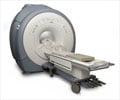A new study has found that the knowledge of the cost of conducting an MRI has no bearing on the number of tests ordered by doctors.

Studies in the past suggest that much of the expense of laboratory tests, medical imaging and prescription drugs is unknown or hidden from providers and patients at the time of ordering, leaving financial considerations largely out of the health care decision-making process and likely driving up costs, Brotman notes.
Other studies have shown that doctors ordered fewer laboratory tests in some cases when they were given the price up front. But Brotman says imaging tests appear to be "a different animal."
There are built-in disincentives to ordering many major tests if they are not necessary, such as the potential danger of radiation used in some, Brotman says. In addition to making physicians more sensitive to the costliness of unnecessary testing, Brotman says they need to learn how to explain to patients why they may not need them.
For the study, Brotman and his colleagues identified the 10 imaging tests most frequently ordered for patients at The Johns Hopkins Hospital. Dividing the tests into two groups, they made sure prices were attached to one group over a six-month period, from November 2009 to May 2010. Brotman and his colleagues left out the pricing information for the other group over the same time period. Prices are not typically shared with physicians or patients in most medical settings.
When the researchers compared the ordering rates to the rates from a six-month period a year earlier, when no costs were displayed at all, they found no significant difference in ordering patterns.
Advertisement
That is not to say there aren't times when physicians need to look more closely at whether too many imaging tests are being ordered, Brotman says. For example, patients in a hospital intensive care unit who are on a ventilator and unable to tell doctors how they are feeling may not need a daily chest X-ray to scan for potential problems. Brotman says there is evidence that outcomes aren't compromised if X-rays are ordered only when the patient's condition appears to be worsening. MRIs are also ordered too frequently for lower back pain, he says.
Advertisement
Even though price transparency didn't influence the way physicians ordered imaging tests in his study, Brotman says financial considerations may play a role in other circumstances if tied to clinical evidence.
For example, he says, when clinical programs began to compare the amount of blood products used by surgeons, those who were using far more than their peers (and with similar patient outcomes) took note and reduced their reliance on transfusions, which are not only costly but also carry risks.
If you show a provider that he or she is ordering four times as many CT scans as a colleague whose patients have similar outcomes, it could change the decision-making calculus for the better, he says.
"Cost transparency must be part of the solution to solving fiscal challenges in medicine," Brotman says. "Providers have no idea how much they're spending. Patients don't know either. Having everyone understand more of the economics of health care is a great place to start cutting costs in medicine."
Source-Eurekalert










